Every two years the Olympic Games roll around and we are treated to endless commentary and an amazingly small amount of actual sport (at least on NBC Universal Channels that have a stranglehold on U.S. broadcasts via their $7.75 billion contract). Outside of the NBC hype machine, we have seen a pattern in recent years of news stories critiquing almost every aspect of the host city’s Olympic endeavor in the lead-up to the opening ceremonies. From exposés on the displacement of marginalized peoples for new infrastructure to massive budget overruns to illegal and institutionalized drug doping by athletes, these investigations often question the logic and raison d’être of the entire Olympic endeavor. Of particular interest is the rising sub-genre of environmental quality reporting generally focused on athlete-relevant or visiting reporter-relevant environmental quality (see for example what happened in Beijing and Sochi). Rarely do these concerns survive the lighting of the Olympic Flame. But this year might be different. This year we have data. Lots and lots of environmental quality data. And it paints a pretty disappointing picture.

Rio de Janeiro’s aquatic Olympic venues. Figure: The Washington Post in 2015.
The Promise in 2009
When the International Olympic Committee awarded the 2016 Summer Games to Rio de Janeiro in 2009 on the heels of FIFA’s 2007 announcement of Brazil winning the 2014 World Cup, it seemed to be Brazil’s coming out of sorts as a global socioeconomic heavy hitter. As the “B” star of the new axis of emerging “BRIC” economies that were predicted to rewrite the global order of things, Brazil was seen as finally coming into its own. This was to be something of a culmination of the forces at work since the mid 1990s. Brazil had their “of the people” champion in President Lula da Silva who sought to lift the masses of Brazilian poor out of poverty, had become a global agricultural superpower in everything from beef to soy, was the 12th largest oil producer in the world, and seemed to be making headway reconciling its horrid racial divisions within the context of a burgeoning democracy in the global south.
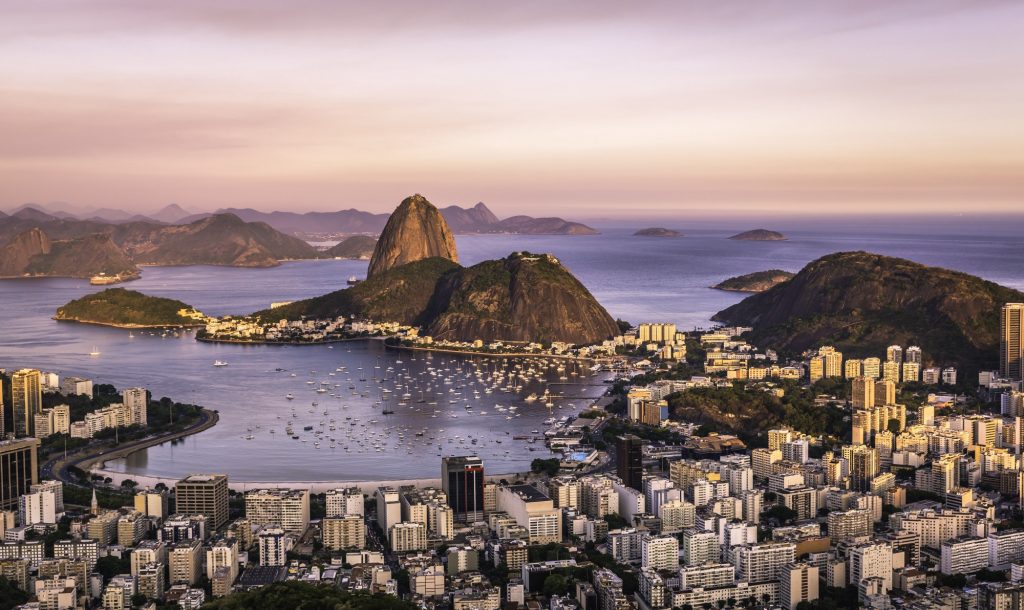
Coastal Brazil incarnate. Rio de Janeiro’s Guanabara Bay and Sugarloaf Mountain. Image: Medium.
Everyone knew the coastal and inland waters were bad, with Guanabara Bay the epicenter of concern for the 2016 Olympics. At the time the Brazilian government committed to “regenerate Rio’s magnificent waterways” via new, permanent sanitary infrastructure. The much-lauded, maverick billionare businessman Eike Batista pledged some of his then-immense personal fortune for both some of the initial cleaning and to help jumpstart those associated improvements. Later this morphed into a consortium of the Dutch government, several Brazilian and international environmental NGOs, and various other Rio business interests proposing holistic solutions to Guanabara Bay’s pollution. It was very heady stuff. Their solution would eventually morph into the Clean Urban Delta Initiative and span an array of more than 20 sub-plans, each with more narrowly targeted outcomes ranging from temporary skimming of floating plastic to the installation of treatment wetlands sized to clean those waste streams prior to their discharge into the ocean.
But that was a long time ago. And then, you know. Reality set in.
Brazil in Summer 2016
Here in August 2016, Rio de Janeiro and Brazil as a whole look nothing like the hope engendered a decade ago. The Brazil of the summer of 2016 is a country of crippling recession, seemingly ever-expanding crime waves, and growing distrust between police forces and the poor residents of flavelas (à la Baton Rouge). Add in a huge dose of Zika virus-induced fear. Then top it off with the landmark “carwash” (Operação Lava Jato in Portuguese) corruption scandal that has already removed the President from office, seemingly touched nearly all of the major politicians across Brazil, and retrograded federal environmental policy to more corporate-friendly policies from the pre-Lula era.
All of this translates into a tempest of distraction for those hoping to improve the fetid coastal environment of Rio’s shores. There has simply been no bandwidth or fiscal wherewithal to resolve these issues. Environmental concerns have become a very low priority for local, state, and federal authorities alike. The Mayor of Rio is out of money, the state and federal governments are paralyzed by the scandal, and that billionaire who ranked as the eighth richest person in the world in 2012 is broke and being prosecuted for numerous counts of insider trading (his net worth may be into the NEGATIVE billions of dollars at last check).
Rio de Janeiro: 2016’s Olympic Home

Copacabana Beach in a rare people-free moment. Image: Adam Jones.
This coastal city’s most recognized landmarks include the Christ the Redeemer statue towering high above the cityscape and the iconic sandy beaches of Copacabana and Ipanema. But the more significant landscape element for our story today is the massive human population at the heart of this megacity. Rio de Janeiro’s roughly 6.5 million residents make it the second most populous city in Brazil and sixth largest in the Americas. More than one-fifth (1.4 million) of these residents reside within the network of flavelas sprinkled across the hillsides and former wetlands buffering the urban core. And the problem isn’t merely a favela issue; a 2015 survey reported 3.6 million people across 100 Brazilian cities lacked even rudimentary connections to sewer systems. These haphazard, unplanned shanty towns have little to no functioning municipal sewage systems, with most dumping raw sewage into the waterways that in turn dump into ocean. This waste stream compounds the already horrible state of waste collection and treatment across the city. Amongst other things, this has produced a massive coastal water quality crisis whose growth paralleled the rise of this recently-robust economy.
Rio’s Water Quality
The day before the opening ceremony, Rio’s coastal waters are not the kind of places you want your kids splashing about in. Rather they are ripe with “raw” human waste, garbage, human viruses and fecal indicator bacteria, according to a 16-month-long Associated Press study widely circulated last week.
The AP ran simple coliform and DNA/RNA Virus Mini Kit assays as well are more sophisticated viral counts and quantitative PCR at various olympic and paraolympic venues hosting rowing, kayaking, canoeing, sailing, and (gulp!) open water swimming. These methods gave them the basic “quick and dirty” water quality parameters that are pretty standard across most of the world, with generally accepted critical points for health concerns and management triggers.
In brief, the fractured and half-hearted Brazilian attempts at infrastructure improvement and pollution abatement have come home to roost. For example, most of the 17 pollution screening efforts are fractured and ineffectual, sewage treatment plants are operating well below their operating capacity with plants not even necessarily plumbed into the sewage system, and then there are the dead bodies just dropped on the beaches (where everyone gets to play volleyball in a week). Brazilian TV reported that about 8,200 liters (2,170 gal.) of untreated sewage flow into Guanabara Bay EACH SECOND. Merged with that AP data, this means ingesting three teaspoons of bay water would produce a “99 %” chance of infection. The Atlantic reported back in in March 7 to 9% of sailors were getting sick while practicing in the Bay, a rate that the International Sailing Federation has argued is acceptable (but exceeds the U.S. EPA maximum illness rate for swimming, 3.6%).
Rio's Olympic Water Quality
| site | date | human adenovirus (min) genome copies/liter | date | human adenovirus (max) genome copies/liter | date | fecal coliform bacteria (min) MPN/100 ml | date | fecal coliform bacteria (max) MPN/100 ml |
|---|---|---|---|---|---|---|---|---|
| Point 1. Marina da Gloria | Sep 2015 | 343,000 | Jun 2015 | 127,000,000 | various | not tested? | various | not tested? |
| Point 2. Marina da Gloria | Mar 2015 | 3,230 | Jun 2015 | 533,000,000 | Mar 2016 | 24,196 | Dec 2015 | 68,000 |
| Point 3. Rodrigo de Freitas Lagoon | Sep 2015 | 372,000 | Mar 2015 | 1,730,000,000 | Apr 2015 | 19,863 | Sep 2015 | 41,066 |
| Point 4. Rodrigo de Freitas Lagoon | Feb 2016 | 36,600 | Mar 2015 | 956,000,000 | Apr 2015 | 24,000 | Sep 2015 | 36,540 |
| Point 5. Copacabana Beach | May 2016 | 842,000 | May 2016 | 414,000,000 | various | no detection | Feb 2016 | 4,860 |
| Point 6. Ipanema Beach | Aug 2015 | 0 | Jun 2016 | 33,500,000 | various | no detection | Aug 2015 | 19,863 |
| Point 7. offshore inside Sugarloaf sailing course in the Guanabara Bay | May 2016 | 932,000 | Nov 2015 | 85,300,000 | various | no detection | Aug 2015 | 19,836 |
| Point 8. offshore inside the naval school sailing course in Guanabara Bay | Apr 2016 | 1,130,000 | Aug 2015 | 34,800,000 | various | no detection | May 2016 | 17,329 |
| Point 9. offshore in the Rodrigo de Freitas Lagoon | May 2015 | 801,000 | Jun 2016 | 331,000,000 | various | no detection | Sep 2015 | 3,150 |
| Point 10. The Quebra-Mar area of the Barra da Tijuca beach | Mar 2016 | 0 | May 2016 | 101,000,000 | various | no detection | May 2016 | 24,196 |
| Point 11. Barra da Tijuca Beach in front of Sheraton Hotel | Mar 2016 | 0 | May 2016 | 87,600,000 | various | no detection | May 2016 | 3,555 |
| Point 12. Leblon Beach | Mar 2016 | 0 | May 2016 | 8,570,000 | various | no detection | various | no detection |
| simple grand mean | 371,653 | 370,147,500 | 6,187 | 23,840 | ||||
| reference levels | ||||||||
| US marine recreational water criteria for FIB (= danger level) | 104 | |||||||
| European marine recreational water criteria for FIB (= danger level) | 400 | |||||||
| Jiang et al . 2001 viral ranges detected in SoCal marine waters (Malibu to Mexico) | 880 | 7,500 |
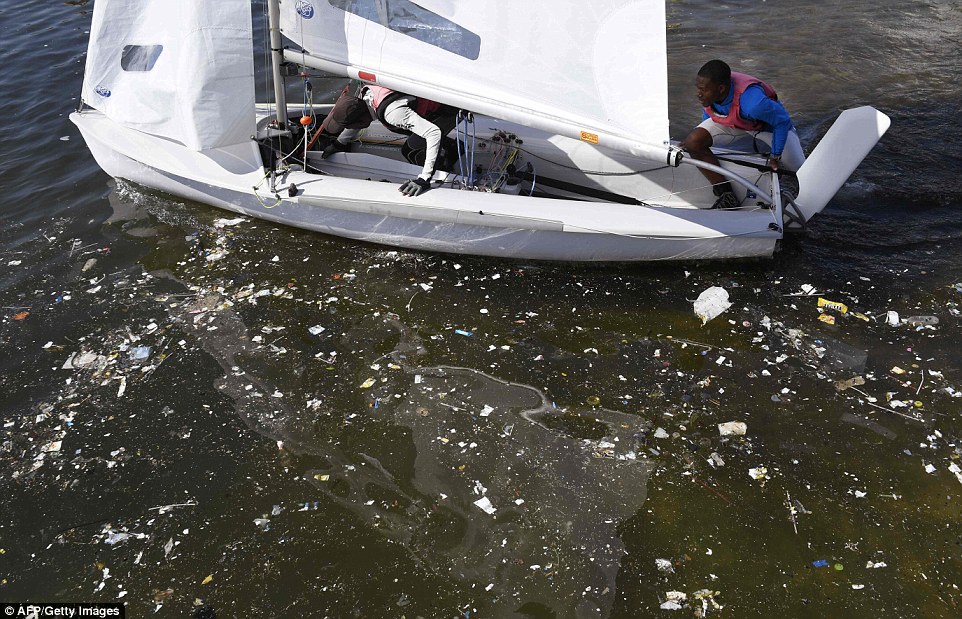
Waste litters the water as two sailors prepare for a training session at Rio de Janeiro’s Guanabara Bay. Image: AFP/Getty Images.
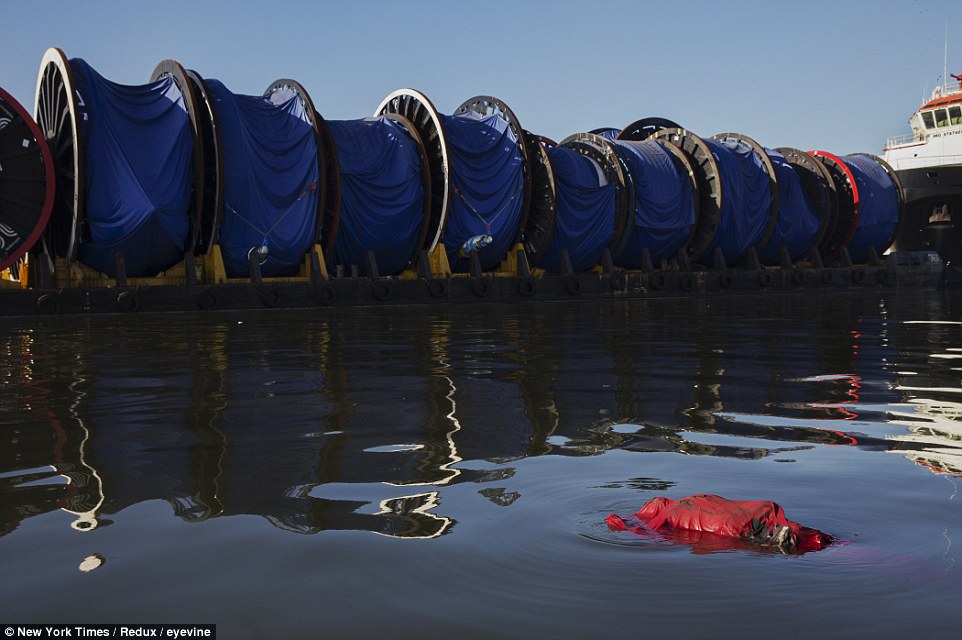
A body floats in the waters of Guanabara Bay, a sailing venue for the 2016 Olympics, in Rio de Janeiro, Brazil. Image: NY Times.

The edge of Rio de Janeiro’s Guanabara Bay. Image: AP.
The pollutants lurking in these waters are a who’s who of everything you might expect from a modern megacity and international port:
- heavy metals: copper, lead, and the other usual suspects
- persistent organic compounds: especially pesticides and environmental estrogens
- excessive nutrients: especially nitrogen and phosphorus (in turn driving localized eutrophication and fish kills)
- contaminants of emerging concern: generally industrial chemicals and pharmaceuticals with biological activity at exceedingly low concentrations (in the parts per million or parts per billion range)
- marine debris & suspended materials: wood, tires, plastic, etc.
- macro- and micro-plastics: while this is actually a subset of the broader debris, our work shows that we need consider plastics separately from other debris categories
- petroleum: mostly coming from unrestricted, non-point discharges into waterways and shipping activity in the harbors and ports
- corpses: dead vertebrates abound in Rio’s waters, including human bodies…enough said
While I can find no direct reported measurements of the following pollution categories, I strongly suspect these are impacting environmental quality in the region based on the gross conditions present in Rio and the background materials I have been reading:
- thermal: water temperature abnormally elevated due to industrial activities, industrial cooling systems, proliferation of impervious surfaces, and urbanization
- sedimentation
- acoustic: excessive noise from coastal vessels and port activity
Boat mechanic Carlos Alberto Junior summed up the conditions on his beach just east of Guanabara Bay succinctly when he told the reporter Vincent Bevins that his beach “serves as two businesses. One is my boat shop, and the other is when roving trash collectors come down here and pick up more here in one hour they can get anywhere else in a day.”
The Oil Spills of Rio
We already mentioned the lack of modern sewage treatment as a key stressor of water quality. We next need to add in good ol’ oil spills and related industrial releases.

Paulo Roberto Costa, a former Petrobras executive, being escorted by police after appearing before a Brazilian congressional committee investigating allegations of corruption. A Range Rover intended to be a gift to Mr. Costa led police to search his office and eventually to arrest him, and he later cut a deal with prosecutors. Credit Ueslei Marcelino/Reuters.
The wider world often associates Rio with scantily clad beach goers or folks dancing salsa during Carnival, but rarely associates this port city with oil and gas production. It is in fact better to conceive of this coastal port as the center of Brazil’s energy sector that it in fact is. Oil and gas accounted for 13% of the country’s GDP in 2014 (the most recent numbers I could find). Rio is the engineering and logistics center for the massive push to exploit reserves under deep water salt domes far offshore. The biggest player here is the state-owned oil company Petrobras, a major part of the unfolding “carwash” corruption scandal ripping apart Brazil this summer.
Unfortunately where we have production, we have spills. Rio is no exception to this. Add to this the typical lack of environmental oversight common in “emerging” or “developing” economies. Most of the oil and gas industry is operating here and across the country without strong environmental permitting. Environmental concerns take a clear back seat to business concerns. For instance, we see zero oversight for underground storage tanks, older refineries simply grandfathered into the production chain without serious attention to modernization to either reduce emissions or improve environmental safety, and weak institutional responses from governmental agencies when a mishap does indeed occur.
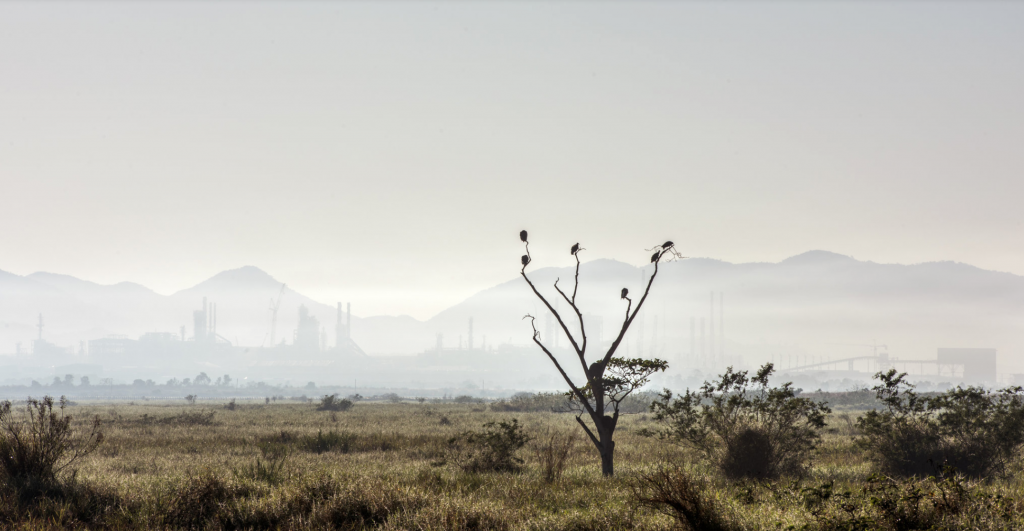
Comperj, a giant refinery and petrochemical complex built by the state oil company, Petrobras, in Itaboraí, Brazil. The unfinished project was originally planned to cost $6.1 billion, but a state audit put the price closer to $50 billion. Image: Andre Vieira for The New York Times.
Here is a brief rundown of a few recent notable oil spills in and around Rio.
Tarik Ibn Ziyad Spill (1975)
Significant spills along Rio’s coast date back to at least March 1975 when the Iraqi-flaged tanker Tarik Ibn Ziyad tore open as it was pulling into the Sao Sebastiao terminal at Santos, releasing an estimated 6,000,000 liters (1,585,000 gal., 37,700 bbl) of light crude oil over 15 hours into the bay and oiling the outer coastline. The spill was fairly dramatic with spilled oil catching fire both on the shores of the oiled Island of Fundao and the surface of the Jequia River (home to a biological reserve) wherein an unspecified amount of mangrove forest burned to the water line. As was so often the case back then, rudimentary monitoring techniques and response capability translated into relatively poor quantification of the impacts of this spill and few details can be found in either English or Portuguese sources.
By the 1990s Brazil’s nascent environmental oversight and assessment capabilities were another story.
Guanabara Bay Spill (1997)
An estimated 2,000,000 liters (528,000 gal., 12,600 bbl) of oil spilled from Petrobras’ pipeline running into their REDUC refinery in 1997, primarily flowing onto the coastline and into coastal waters. We saw significant oiling of littoral regions and the first big acute toxicity to wetlands and fish communities since the 1970s. This would set the stage for cascading implosions of Rio’s fishing industry over the ensuing years. This 1997 spill drove more than half the fisherfolk to seek alternative employment due to collapsed fish stocks and an associated inability to collect enough fish even for subsistence harvest. It also signaled the first widespread public outcry against oil spills and “business as usual” in the petroleum industry, but in practice almost nothing changed. It “primed the pump” for the public response to the spill three years later.
Guanabara Bay Spill (2000)
The most ecologically significant spill in the past few decades in the Rio region was arguably the January 2000 Guanabara Bay spill. In a redux of the 1997 spill, the Petrobras pipeline bringing crude into their REDUC refinery ruptured and released 1,300,000 litres (343,000 gal., 8,200 bbl). Oil was dispersed widely across the northern and northeastern regions of the bay fouling various islets, rocky beaches, sandy beaches and mangroves. Acute toxicity was clearly observed as we saw conspicuous die offs within the fringing mangrove community and many fish and invertebrate populations.

Workers clean an oil contaminated beach off Rio de Janeiro’s Guanabara Bay in 2000. Image: AP Photo/Renzo Gostoli.
Quite disturbingly, total Polycyclic Aromatic Hydrocarbons (PAHs) in seawater sampled at most monitoring stations ten days post-spill were within same range of PAH previously reported for Guanabara Bay (0.05 to 2.97 L-1). Fish tissue from two species in the immediate wake of the spill showed no significant elevation in PAH concentrations relative to reference samples from the same sites one year prior to the spill (15.8 to 76.3 µg kg-1) suggesting no elevated threat to the human health from this particular spill. One interpretation here was that there was nothing to worry about as we saw no elevated “oil signal” post-spill. Alternatively, you could read these results with grave concern, interpreting this as a bay so contaminated from day in, day out pollution that even such a massive spill doesn’t elevate exposure or risk. It was most likely the latter as SCAT surveys post-spill showed that at least 70 km of coastline was heavily oiled. In addition, coastal sediments showed clearly elevated PAH concentrations (see Gabardo, et al. 2003) relative to pre-spill concentrations.
In 2007, Petrobras was ordered to compensate fishermen $300 million for the loss of their ability to fish due to the outright destruction of the wide range of fish stocks. Sixteen years post-spill and nine years post court order, no fishermen have yet to see any money. I can find no evidence of significant ecological recovery of these impacted regions. Tech Insider reported the current situation of the fishing community last month:
Alex Sandro Santos, the president of the Fishermen Association of Tubiacanga, is a third generation fisherman in the area. Fifty years ago, he says, you could find dolphins swimming in Guanabara Bay. When a Petrobras petroleum plant opened up four decades ago, things started going downhill.
“With the growing population here, everything goes in the bay without treatment,” he told Tech Insider during a visit to Guanabara Bay in 2015.
At the beginning of that year, Santos recalls, a journalist from local publication O Globo threw a red ball into his bathroom toilet. He later found it in the bay.
Most fishermen have second jobs. They’re construction workers, cleaners, and boat renters for tourists on the side. Younger local residents see the dismal future in fishing on the bay and have started looking elsewhere. “There are lots going to deal drugs,” says Sergio.
Chevron Campos Basin Blowout (2011)
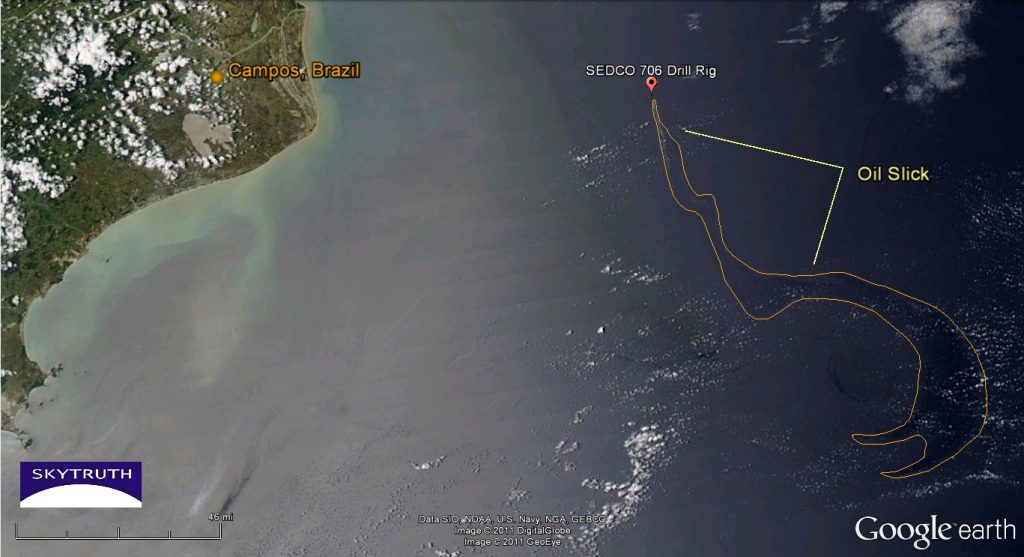
MODIS/Aqua satellite image shows a growing surface oil slick over the deepwater Campos Basin off Brazil. Image from Skytruth, after satellite grab from midday on November 12, 2011.
In something reminiscent of the 2010 Deepwater Horizon blowout, a Chevron-led drilling consortium working the Frade field in 1,128 m deep waters 120 km northeast of Rio de Janeiro lost containment of their exploratory well in November 2011. That Campos Basin blowout then ran unchecked for four days as it released 590,000 liters (156,000 gal., 3,700 bbl) of crude (although satellite imagery suggests to it was larger than this official number). Insufficient capping of the wellhead allowed the higher-than-expected wellhead pressures to kick out drill muds and defeat the cementing of bore drilled by Transocean‘s SEDCO 706 platform. Favorable winds and currents kept oil no closer than 100 km from shore and appear partly responsible for the amazingly low final settlement associated with clean-up/spill. Chevron shuttered their well for 18 months and ultimately settled with the Brazilian government for $135 million, a considerable “victory” f0r the company considering the government initially asked for $18 billion in damages. While Chevron was in no way responsible for the failed Olympic-driven efforts to clean up Rio’s waters, such a large settlement could most likely have assisted with several of measures identified in the Clean Urban Delta Initiative. Brazilian petroleum regulator ANP fined Chevron for failing to follow drilling plans, but absolved the company of negligence. Given the corruption and payola now swirling around Petrobras, the scuttlebutt at the moment is whether Petrobras’ 30% stake in the Frade consortium played a role in their winning such a light settlement.
Petrobras Pipeline Spill (2015)

June 2015 Petrobras pipeline spill. Image: AP.
The most recent release in the region was yet another pipeline spill, albeit a very small one. The June 2015 rupture of a Petrobras pipeline once again doused coastal wetlands in an estimated 600 liters (159 gal., 4 bbl) crude as it flowed down into the sea with an estimated 50 liters (13 gal.) making it to ocean waters. The “carwash” scandal was initially suspected of playing a roll with union officials and industry analysts concerned the scandal appeared to be diverting the company’s attention away from routine operations and maintenance. But it quickly became clear thieves caused the spill as they attempted to steal oil.
As of 2016, the frequency of spills and ubiquity of petroleum contamination in both water and animal tissues are a source of increasing consternation for fisherfolk across Rio de Janeiro’s coast. Ongoing investigations into multiple deaths and disappearances of fishermen since the 2000 Guanabara Bay spill appear related to their calls to change the business as usual culture pervading the region. Investigations into that violence now appear to be at a stalemate. Fisherman Lauro Coelho Jr. told NPR last June “the oil industry is involved in an environmental and economic conflict in which there is a clash between development and the environment. And in the midst of this conflict, deaths occurred.” Coelho went on to say he had no evidence directly linking the fishermen murders and threats to any specific polluter. Petrobas has publicly stated their company is “unaware of these incidents and rejects any act of violence against the fishermen… All of our projects rigorously follow the various government environmental controls and are licensed.”
Degraded Ecosystem Function

The rapidly locally disappearing (and data deficient across its global range) Somalia fluviatilis. Image: Fernando Trujillo.
There are a variety of metrics showing reduced ecological structure and function across Rio’s coastal zone over the past several decades. But perhaps the clearest comes from the trajectory of the freshwater dolphin the tucuxi (Sotalia fluviatilis). Sergio Ricardo, director of the Bahia Viva NGO told Vice Sports a few months back:
“The great environmental indicator of the level of pollution in the bay is the tucuxi. In 1995 Rio de Janeiro State University identified 800 [tucuxi] in the bay, ten years later there were 400, and now there are just 35,” said Ricardo. “They’ve been described as the most contaminated mammals in the world.”
The fate of the tucuxi, a freshwater dolphin found in Brazil, also highlights the failure of the Rio state government’s Guanabara Bay Depollution Program, which began in 1995, has been extended several times, and has failed to produce significant improvements in the condition of the water.
According to Ricardo, Rio’s historic inability to clean up the bay meant the city’s pre-Olympic promises rang hollow. “We knew that the pledge to clean 80% of the waters of the bay wouldn’t work,” he said angrily. “The International Olympic Committee was highly irresponsible. If the depollution programs hadn’t worked in 20 years, how could they accept this target, which was obviously based on false promises?”

Dead fish float on the edge of Guanabara Bay in 2015, a part of which is the Rio 2016 Olympic Games sailing venue. The polluted bay receives a majority of the city’s raw sewage and officials have recently admitted their cleanup goals won’t be met in time for the Olympics. Photograph: Mario Tama/Getty Images.
51-year-old fisherman Robson Salgado de Oliveira told the same reporter:
“There was shrimp in the bay up until two or three years ago. And anchovies and hake, but now they’re basically extinct. I have to travel further and further away every day to get a decent haul. I work two shifts per day, starting at 3 a.m., and make around the minimum salary.”
An Opportunity Lost
Axel Grael, vice mayor of nearby Niterói and co-founder of an NGO promoting both sailing and environmentalism told the The Washington Post last year, “In the Glória Marina, the conditions are terrible… We had enough time…to make a leap in the environmental quality of the bay. There was a lack of political will and management initiative.”
Brazilian Olympic sailor Isabel Swan who won Bronze in 2012 defeatedly noted last year that she “always believed in the project Rio 2016 as something good for Rio. But the way things happen, the delay in things, the bureaucracy, these things mean that Brazil does not go forward. This is my sadness.”
And just in case you think all this attention will amount to continued global pressure or assistance from abroad post Opening Ceremony, you have to only go so far as to ask some of the athletes or organizers what they think. In an essay for The Guardian, U.S. Olympic rower Megan Kalmoe infamously addressed the polluted water concerns head on last week. She used not so subtle language and left no doubt that she was done with any discussion of environmental quality:
I have worked for 10 years to get to this point and will continue to work as hard as I can over the next few weeks to make the most of this very special and unique opportunity.
But all you want to do is talk about sh*t in the water.
My request to everyone who is fixated on sh*t in the water: stop. Stop trying to ruin the Olympics for us.
I can’t be sure when the first headlines about the water quality in Rio appeared and the conversation really started. But ever since then, it seems like it’s all people want to talk about. And I can’t really understand why. At this point, it is known that there are issues with the water quality. It is known that athletes are going to be at risk for illness. It is known that we are going to have to be smart, hygienic and take precautions. Great. Let’s move on.
What purpose does it serve to dwell on this? What benefit can we possibly gain from drilling athletes on their position on the water quality in Rio? None…
I will row through sh*t for you, America.
And I will do it gladly, and proudly, because rowing on this team in Rio is not something I’m afraid of, or going to complain about. I will do it, and I will defend fiercely the dignity of the people who are doing their best to make everyone happy while we are all guests in their beautiful country. I will do it, and I will try to discourage you from taking away even the tiniest bit of magic or excitement from a single one of my teammates who have earned this trip with their blood and sweat, and all of whom deserve to have a really positive experience in Rio.
So there you have it. It is apparently time to get on with the games. Because clearly, folks competing against one another is the only thing we should worry about these days. Somehow I think the NCAA and NFL would strongly agree with that sentiment.
That and getting your Hepatitis A booster.
And maybe an antibiotic or two.
Let the games begin!
Update on August 11, 2016:
Green Pools
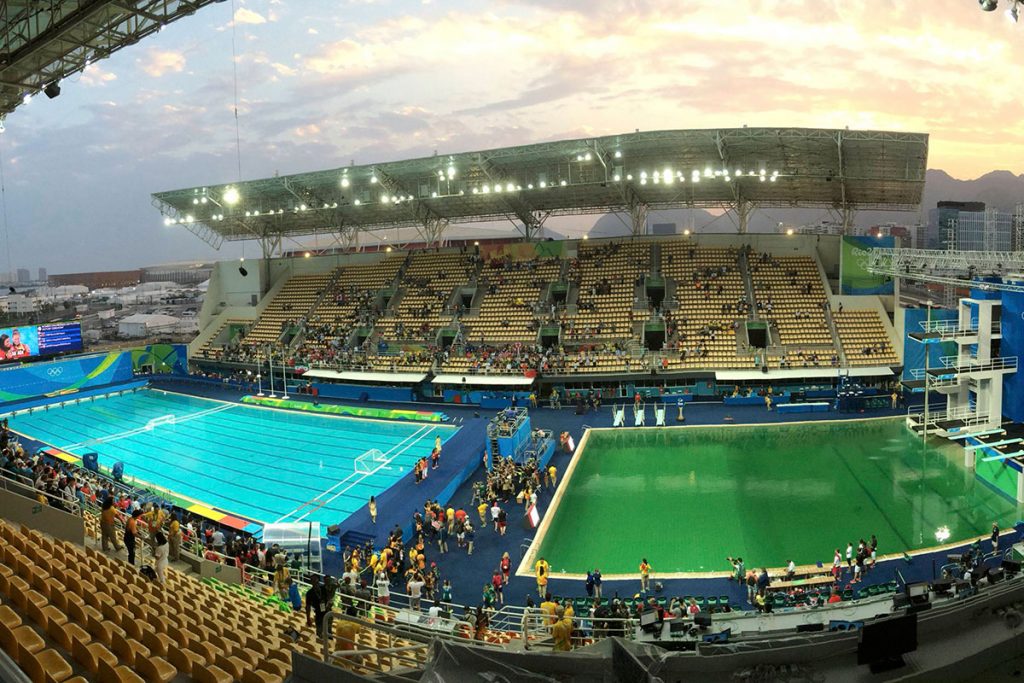
Olympic Pools in Rio, August 10, 2016. Image: Sylvain Marchandise/Reuters.
Apparently the coastal waters aren’t the only places with challenging water quality. The Olympic diving pool went green on August 9. Reportedly due to an alkalinity spike that allowed an algal bloom in the first outdoor Olympic pool in years, it begs the question: Is anyone actually paying attention to water quality in Rio? Olympic Committee statements that “the water [in the pool] is safe” are reminiscent of “the Guanabara Bay is safe for athletes” statements we have heard of late. Big confidence booster.
Michelle Taylor from Laboratory Equipment did a short piece on the green pool that quoted me.
Ohh…and more pools are turning green now.

The Olympic diving pool on August 8 (left) and the Olympic diving pool on August 9 (right). Image: AP.
General Water Quality
Also, here is a great, short piece with a bit more perspective on the global water quality challenge we face in our coastline and water bodies around the world.
Rio Water-Related Illnesses
Lastly, we seem to be starting to see the consequence of holding athletic events in polluted waters. The first pretty clear example of poor water quality taking out an elite competitor during the games became evident today. Evi van Acker, the Belgian bronze medalist from the 2012 London Games in Laser Radial class boats came down with an as of yet unspecified intestinal illness (read: likely water-borne pathogen) post arrival in Rio to train:
“Evi caught a bacteria in early July that causes dysentery,” coach Wil Van Bladel said. “Doctors say this can seriously disrupt energy levels for three months. It became clear yesterday that she lacked energy during tough conditions. She could not use full force for a top condition. … The likelihood that she caught it here during contact with the water is very big.”
Van Acker was evaluated by the chief medical officer after her races on Wednesday and evaluated further by the Belgian medical team that night, World Sailing spokesman Darryl Seibel said. He added that this appears to be an isolated case and Van Acker is the only sailor who has reported feeling ill in the opening days [emphasis added] of the regatta.
So an olympic medalist will likely be missing the finals this year thanks to contracting dysentery. Good times. Everyone ready for the open water swim next week? Rumors are that many of these Olympians are on prophylactic antibiotics to try and stave off any infections until after their competition.
Update on August 13, 2016:
More Beach Problems
Strong winds and swell have been the bane of the Rio Olympics water competitions over the past few days, postponing two rowing events until winds die down later in the weekend.
I just came to swim at my daily spot in Copacana, and this huge #Rio2016 swimming platform has washed up on the sand pic.twitter.com/QnBvAaUciw
— Vincent Bevins (@Vinncent) August 13, 2016
The same folks who brought you “the water is clean” and “there is nothing wrong with the green pools” were also saying there was nothing to worry about when the floating dock that serves as the starting point for ocean swimming races broke loose and ended up on the beach. Yep nothing to see here, move along. You can read the LATimes Vincent Bevins report here.
Ricardo Ratto, an Olympic and FINA coach and administrator from Brazil explained the sea state Saturday morning:
According to our forecast, the sea began to get rough here in Rio de Janeiro [beginning] last Friday. The swell at its highest point was more than 7 feet high. It reach this height last night from Friday to Saturday. The Olympic course, that was already set, was destroyed. The starting platform was split into three parts, that all came floating to the beach. The feeding platforms were destroyed as well.
The Rio Olympic Games Organizing Committee and FINA’s Technical Open Water Swimming Committee have a lot of work to set the course all over again. The consulting company that was tasked to do the repair work asked for a day and a half to perform and complete their duties.
Fortunately, the forecast for the next days is quite good. On Monday and Tuesday mornings [when open ocean swimming races will take place], the sea will be much more calm than it is [now]. Rio’s Organizing Committee is lucky because the marathon swims are scheduled to take place in between two big swells. But on Tuesday afternoon [the date of the men’s 10 km race], the sea starts getting rough again.
This will be a big problem for Olympic triathlon that starts on Thursday morning when, according to the forecast, a new swell 7 feet high will smash Copacabana Beach shore once again.
Chemistry “not exact”
And to wrap thing up, Rio officials have finally decided they cannot get their Olympic pools clean in time for synchronized swimming given the persistent water quality problems since Tuesday. They will therefore be doing a water exchange by shunting water from a clean, water polo pool into the tainted green “swamp” pool. Hey, this is a tough job and we should cut them some slack. After all, as Rio Olympic spokesman Mario Andrade said:
Chemistry is not an exact science…[the pool] should be light blue, transparent. We could have done better in fixing it quickly. We learned a painful lesson the hard way.
Wow! I love the fact I get to learn something new everyday. Here I though Chemistry was built on precision and a strong ability to predict daughter compounds post reaction. Man, was I wrong. Thanks for setting us straight on the whole chemistry thing, PR expert!

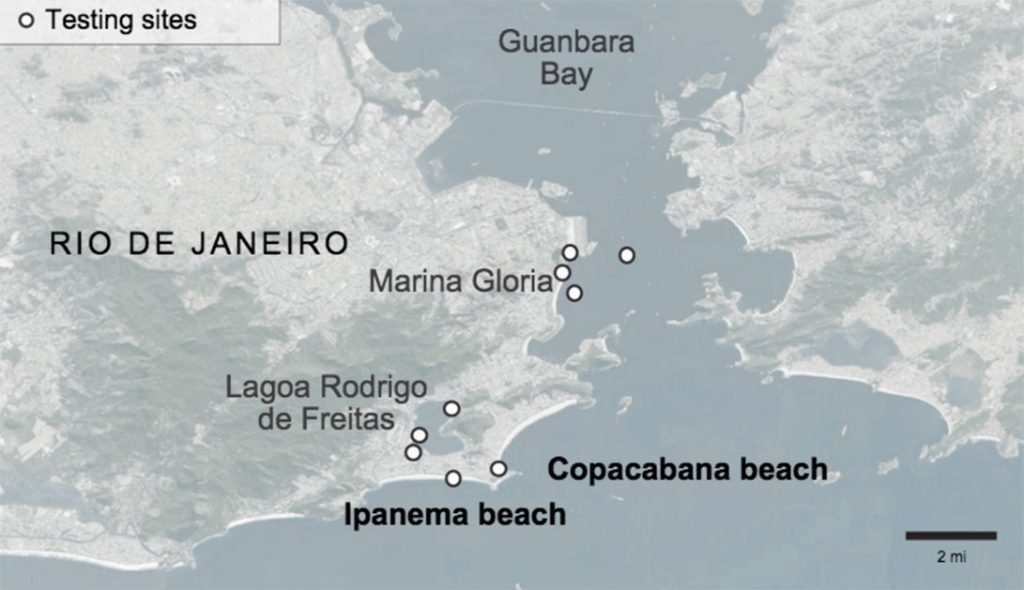
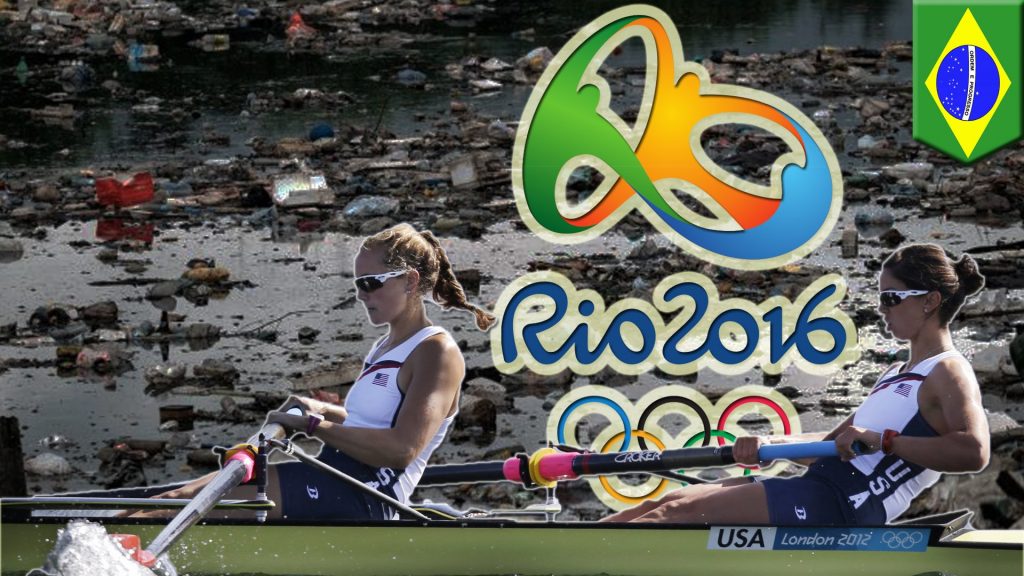
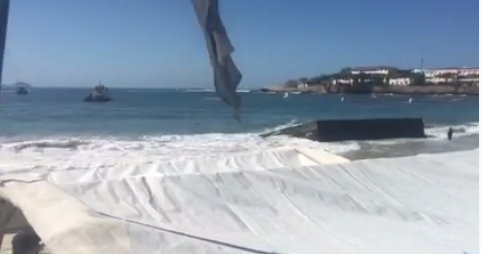
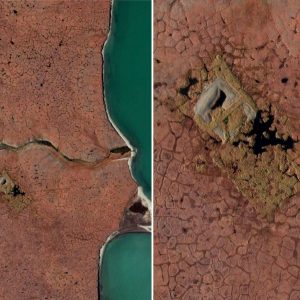



Leave a Reply